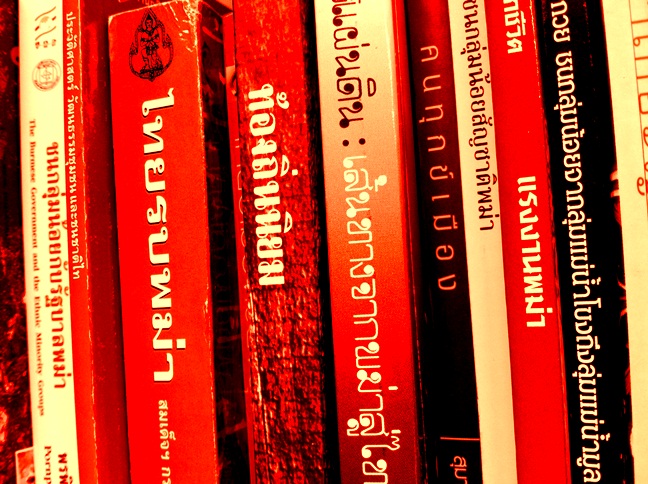In recent weeks I have been doing plenty of reading on the 1932 overthrow of Thailand’s absolute monarchy. I am learning as I go. Long-time followers of New Mandala will know that I have an intermittent focus on various aspects of Thai coup culture but this is the first time I have ploughed through many of the sources relevant to 1932.
I have been paying particular attention to Thawatt Mokarapong‘s History of the Thai Revolution: A Study in Political Behaviour (Bangkok: Chalermnit, 1962). It is based on his Indiana University doctoral dissertation. Benedict Anderson calls it “[t]he fullest English-language account” of the events of 1932. I agree: it is packed with intriguing details.
I am especially taken with Thawatt’s lengthy descriptions of what happened on the morning of the coup itself.
He introduces the idea that “[e]veryone thought everybody else had joined the revolution; and none dared think of resistance” (Thawatt, 1962: 35).
I like this. It encapsulates the interlocking notions of denial, half-truth, feint and misinformation that provided the foundation for the successful coup recipe, especially after the mis-steps and mis-judgements of a previous generation of would-be coup-makers in 1912.
I can see how once the coup instigators picked up sufficient momentum the prospect of resistance faded to nothing; in general, there is a threshold that needs to be overcome but after that point it takes incredible will, and organisation, to adequately counter a coup. Naturally enough, in any counter-coup scenario, money, charisma and brute force need to play their roles.
Thawatt tells us that a key difference between 1912 and 1932 was that the senior leadership in 1932, all of whom were colonels, were “not only colourful personalities but had the prestige of outstanding educational backgrounds and high military positions” (Thawatt, 1962: 27).
He goes on to explain that Thailand’s1932 political changes were “hailed throughout the world as the most peaceful and bloodless of revolutions” (1962: 42). That is a generic assessment that has been echoed by commentators over the decades who have marveled at the relatively peaceful execution of the country’s many subsequent military interventions.
Inevitably there are questions from the vantage of 2012 — 80 years after the 1932 revolution — about what any future Thai coup might look like. What I take away from Thawatt is that the real art is to convince any wavering or loyalist forces that the coup-makers are already in control. This is not, I’m sure, ever as easy as it is made out to be.
But during the uncertain next phase of Thai politics I expect the lessons of the 1932 revolution are well worth studying in full.
******
As a footnote, Thawatt Mokarapong went on to a long career as a Thai educator and official, including stints as Governor of many provinces such as Uttaradit, Phang-nga and Chonburi. A full obituary (in Thai) is available here.
 Facebook
Facebook  Twitter
Twitter  Soundcloud
Soundcloud  Youtube
Youtube  Rss
Rss 